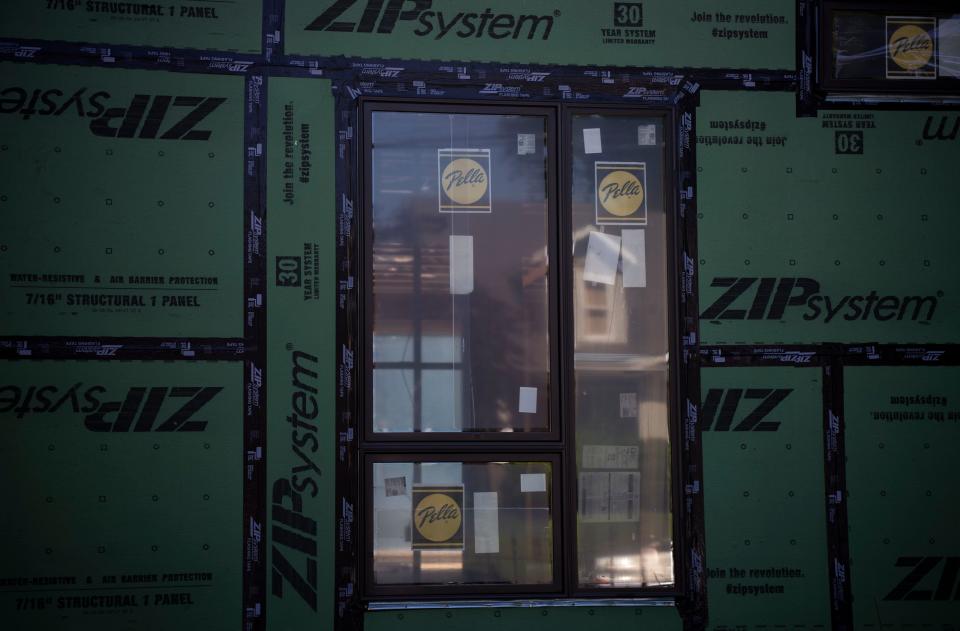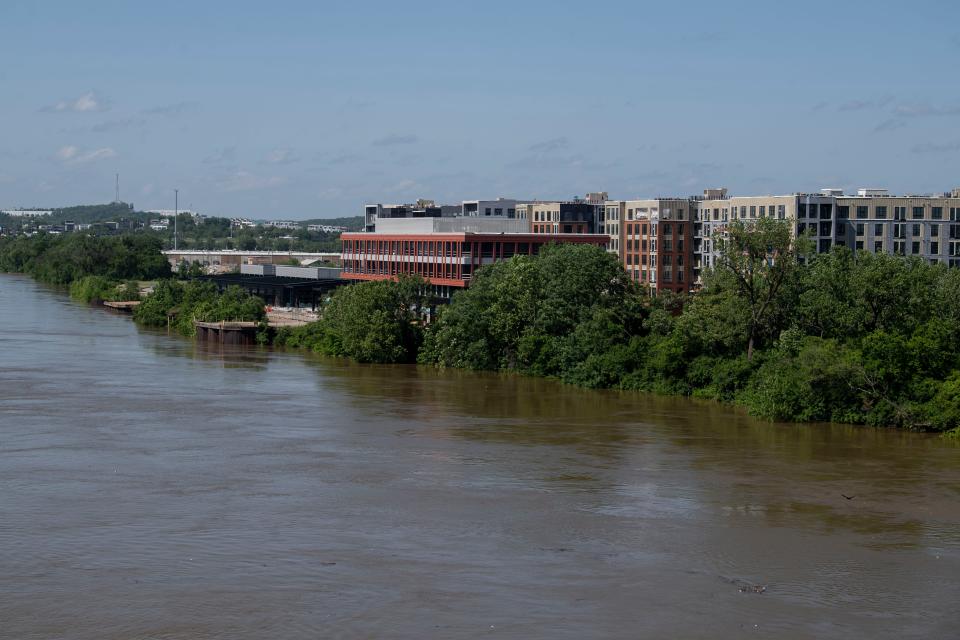How does Nashville's East Bank compare to the Gulch? Nashville Yards?
About 417 standard football fields could fit side by side in the area known as Nashville’s East Bank, between the Cumberland River and Interstate 24.
Over the next several decades, the area is expected to completely transform.
New neighborhoods will emerge, anchored by a transit hub, entertainment venues, shopping centers and a new football stadium. Generations of people will live, work and play in those 550 acres.
But first, the city is set to partner with The Fallon Company to build the first true phase — on approximately 30 acres of land surrounding the site of the forthcoming new Nissan Stadium.
It’s a tall order, but it hasn’t come without preparation. The Metro Planning Department embarked on a yearslong public engagement process to create Imagine East Bank — a vision document intended to inform the development of both city-owned and privately held land in the area. The vast majority of the city-owned land is currently paved over with parking lots.
"Really great neighborhoods evolve over time," said Metro Planning Director Lucy Kempf. "While we are very quickly setting the framework, the implementation of that is going to take a long time."
This will not be the first time Nashville sees a brand new neighborhood rise out of the ground. Other examples of urban master-planned neighborhoods include the Gulch and Nashville Yards. Those two areas look dramatically different after millions of dollars of investment and years of development, and both dealt with geographic constraints — like the train tracks and rail yards that carve up the area.
One thing is apparent: The development of the East Bank will be measured in decades, not years. And the plan will likely need to adapt along the way.
What can the East Bank development learn from the Gulch?
MarketStreet Enterprises, the master developer of the Gulch, bought its first property in the area about 25 years ago. It's the only other time the city partnered with a master developer to plan a Nashville neighborhood.
MarketStreet's partnership with the city helped lay the groundwork for crucial investment on the public infrastructure side of the development — specifically underground utility improvements and roadway realignment. Those projects laid out a new neighborhood grid for MarketStreet to build on.
The real estate company, in tandem with the city and other developers, steered the transformation of the 60-acre plot into one of the most attractive downtown neighborhoods today, packed with both locally owned and nationally popular businesses.
The city's first phase of East Bank development, by comparison, is about 30 acres in size and includes many of the same basic elements as the Gulch. New buildings will include apartments, hotels, retail and restaurants. Public infrastructure, including an improved street grid, will be crucial to efficient multimodal transportation at the site.
But 25 years in, the Gulch's 60 acres are only about halfway done, according to MarketStreet. Deliberate planning by the firm over time has allowed the neighborhood to grow alongside the rest of Nashville.
The new Nissan Stadium on Nashville's East Bank will need to be ready by 2027. Development of city-owned land around the stadium, however, will be a longer process.

How big is the Nashville Yards project?
Meanwhile, Nashville Yards has emerged near downtown over the last decade. Comprised of several towers developed by San Diego-based Southwest Value Partners, the Yards includes Amazon’s Nashville headquarters, the Grand Hyatt hotel, multiple apartment buildings and the forthcoming headquarters of Pinnacle Financial Partners. The overall development spans about 19 acres.
The Nashville Yards project took design cues from the dense downtown area, with building heights ranging from 20 to 35 stories. In addition to offices for Amazon and Pinnacle, the site will be home to a Nashville office for Creative Artists Agency, a concert venue and 650 residential apartments.
The result will be an active and dense urban neighborhood filled with office workers and residents by day and concert attendees and restaurantgoers by night, according to Southwest Value Partners.
Nashville Yards has already been in development for a decade, and work is expected to continue on the site for years to come. The buildings on either end of the footprint — Amazon to the north and the Grand Hyatt hotel to the south — were completed first, while the creative offices and concert venue in the middle will be completed later. East Bank construction, on the other hand, will start with Nissan Stadium and work outward toward the Cumberland River and interstate.
Other publicly owned developments
One example of a publicly owned property that was developed by the city is the Music City Center, which sits on about 21 acres of land and opened in 2013.
When it was built, the Music City Center was the most expensive civic project in Nashville's history at $623 million. An additional $245 million in public spending went to the construction of the adjoining Omni Hotel.

The project took three years from groundbreaking to opening and sits at the heart of some of the most high-profile downtown development in Nashville over the past decade. Nashville's convention popularity is second only to Orlando, Florida, according to the Nashville Convention and Visitors Corp.
The city also owns and plans to transform the former Hickory Hollow Mall, which occupies about 27 acres of land in the Antioch area. The city greenlit demolition of the water-damaged interior of the mall, and a master plan is expected to be finalized in late summer.
The city purchased the derelict mall in 2022 for $44 million.
By the numbers: Nashville's East Bank compared to other developments
East Bank: 550 acres
Metro-owned land: 110 acres
First development phase: 30 acres
The Gulch: 60 acres
Hickory Hollow Mall: 27 acres
Nashville Yards: 19 acres
Music City Center: 21 acres
This article originally appeared on Nashville Tennessean: How does Nashville's East Bank compare to the Gulch? Nashville Yards?

